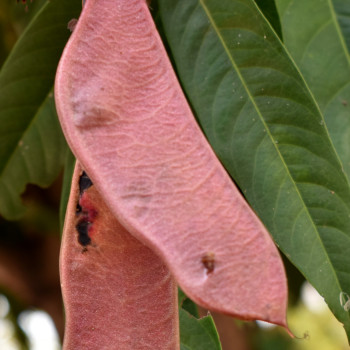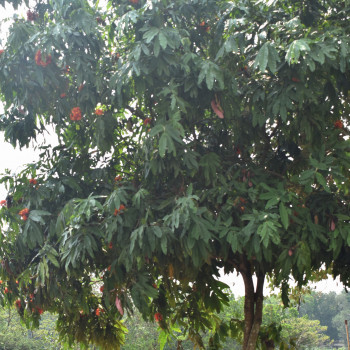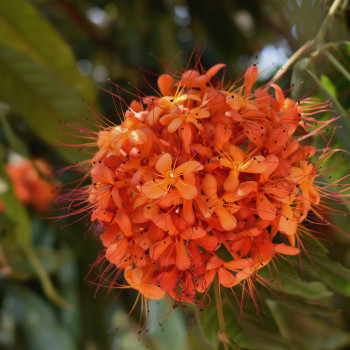Asokam

Scientific Name :
Saraca asoca (Roxb.) de Wilde
Synonym(s) :
Saraca indica sensu Bedd.
Local/Common name(s) :
Asokam
Family :
Fabaceae
Habit :
Tree
Flowering/Fruiting Time :
February-August
Habitat :
Evergreen forests, also grown as ornamental tree in the plains
Endemic :
No
Status (IUCN) :
Vulnerable (VU)
Distribution :
India and Myanmar
Nativity :
Indigenous
Uses :
Medicine
Description (Morphology) :
Trees, to 10 m high, bark 2-3 mm thick, surface brown or brownish-black, lenticellate. Leaves paripinnate, alternate; leaflets 6-12, opposite, 7-28.5 x 2-8.5 cm, narrowly oblong, oblong-ovate or ovate-lanceolate, round, cuneate or acute, apex acute or acuminate, base obtuse, margin entire, glabrous, coriaceous; stipules 7-20 mm long, intra petiolar, scarious, ovate, connate; rachis 4-25 cm long, slender, pulvinate, glabrous; petiolule 2-10 mm long, stout, glabrous; lateral nerves 10-15 pairs, pinnate, arched towards the margin, slender, faint, intercostae reticulate, faint. Flowers bisexual, yellow-orange or red, in dense sessile paniculate corymbs, axillary to leaves or leaf scars; bracts ovate, small deciduous; bracteoles 4 mm long oblong-spathulate, ciliolate, coloured, subpersistent. Calyx 4 cm long, petalloid, cylindric, enclosing a lobed disc; lobes 4, ovate-oblong, unequal, spreading, imbricate. Petals 0. Stamens 7 or 8, much exserted, free; filaments long, filiform, coloured, glabrous; anthers versatile. Ovary half inferior, stipitate, the stipe adnate below to one side of the disc, pubescent; style incurved, glabrous, filiform; stigma small, capitate; ovules many. Fruit a pod 10-5 x 2-5 cm, flat, oblong, coriaceous or almost woody, tapering at both ends; continuous within; seeds 2-8, 3.8 cm long, ovoid, slightly compressed.




